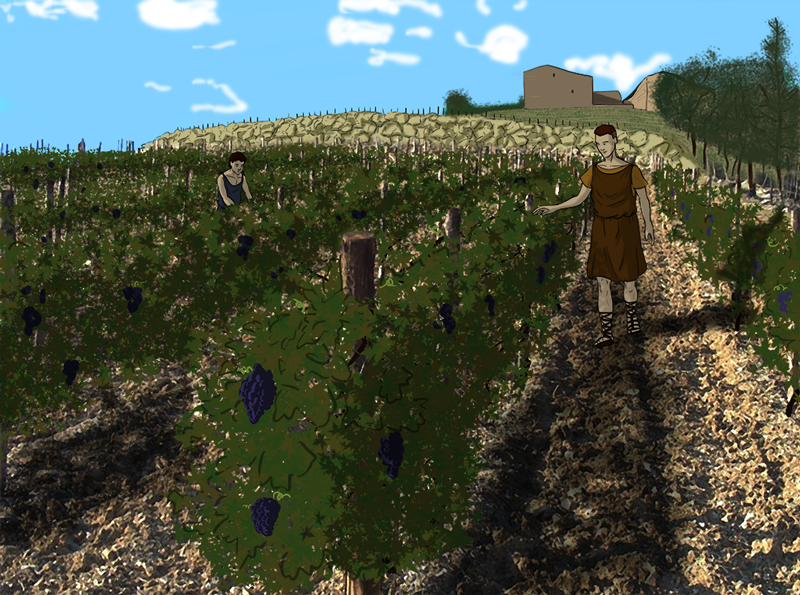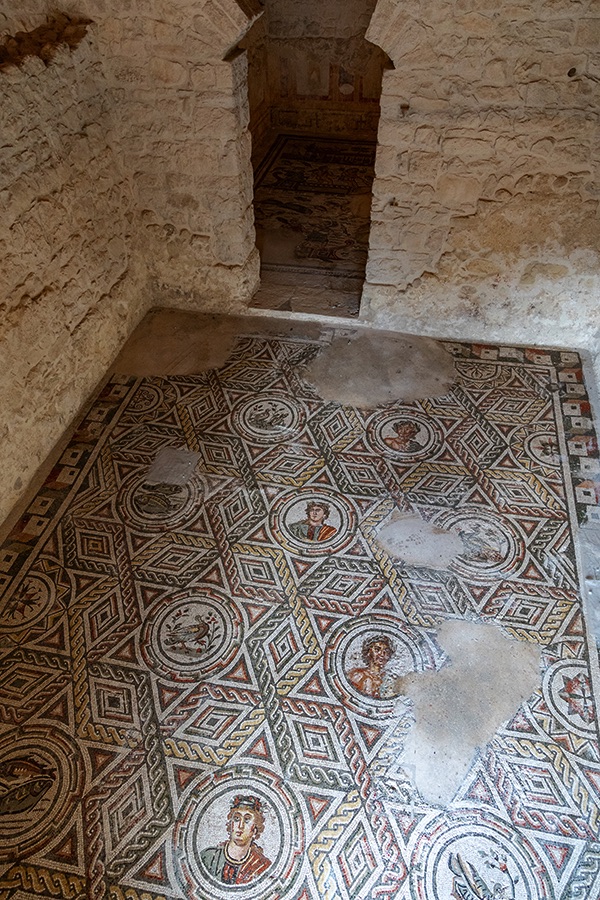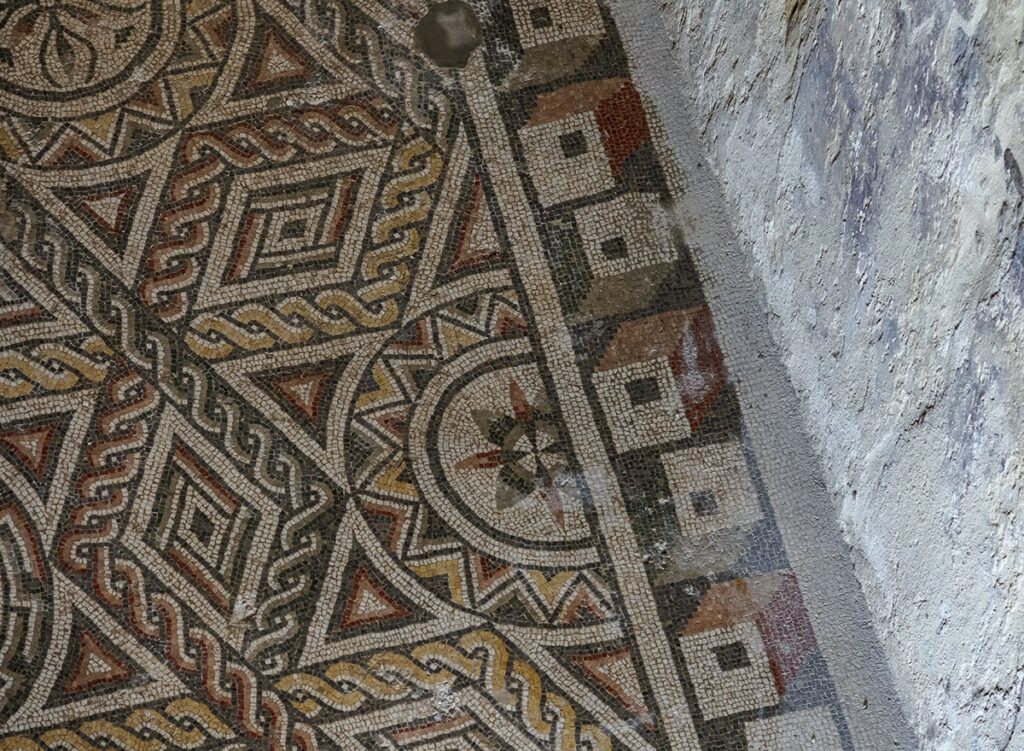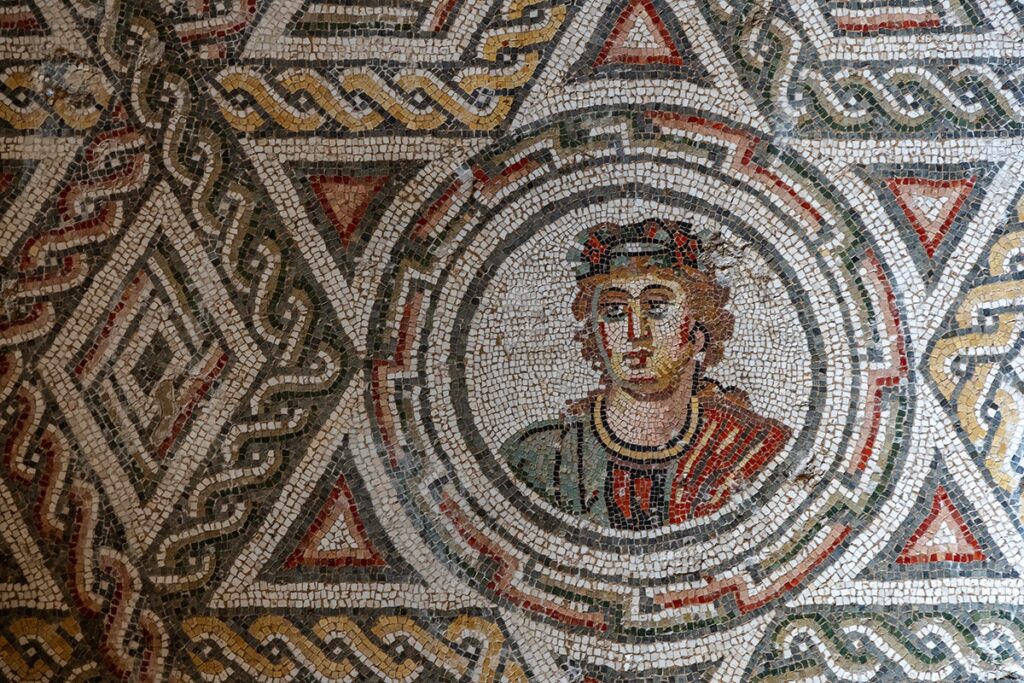The theme of the Seasons, closely related to the agricultural activities of the
latifundium
the late antiquity Villa was part of,
 has ancient philosophical origins already addressed at the beginning of the 1st century AD by
Ovid
has ancient philosophical origins already addressed at the beginning of the 1st century AD by
Ovid
in Book XV of his
Metamorphoses
. In a poetic key, the mythological epic poem deals with the importance of the passage of time and rebirth, through whose action everything is destined to develop, transform and die in an endless cycle. The subject, also described in other rooms of the Roman domus, is depicted with extreme iconographic simplicity in the mosaic decoration of this rectangular room, which is accessed from the quadrangular
peristyle
.
 The particular nature of the iconographies that decorate the floor suggests that it was used as a dining room.
The particular nature of the iconographies that decorate the floor suggests that it was used as a dining room. Framed by a line of prospective cubes, the geometric mosaic enriched by numerous tiles in different colours is composed of a scheme of hexagons that create rotations of six rhombuses that in turn contain large six-pointed stars with medallions.
Framed by a line of prospective cubes, the geometric mosaic enriched by numerous tiles in different colours is composed of a scheme of hexagons that create rotations of six rhombuses that in turn contain large six-pointed stars with medallions.